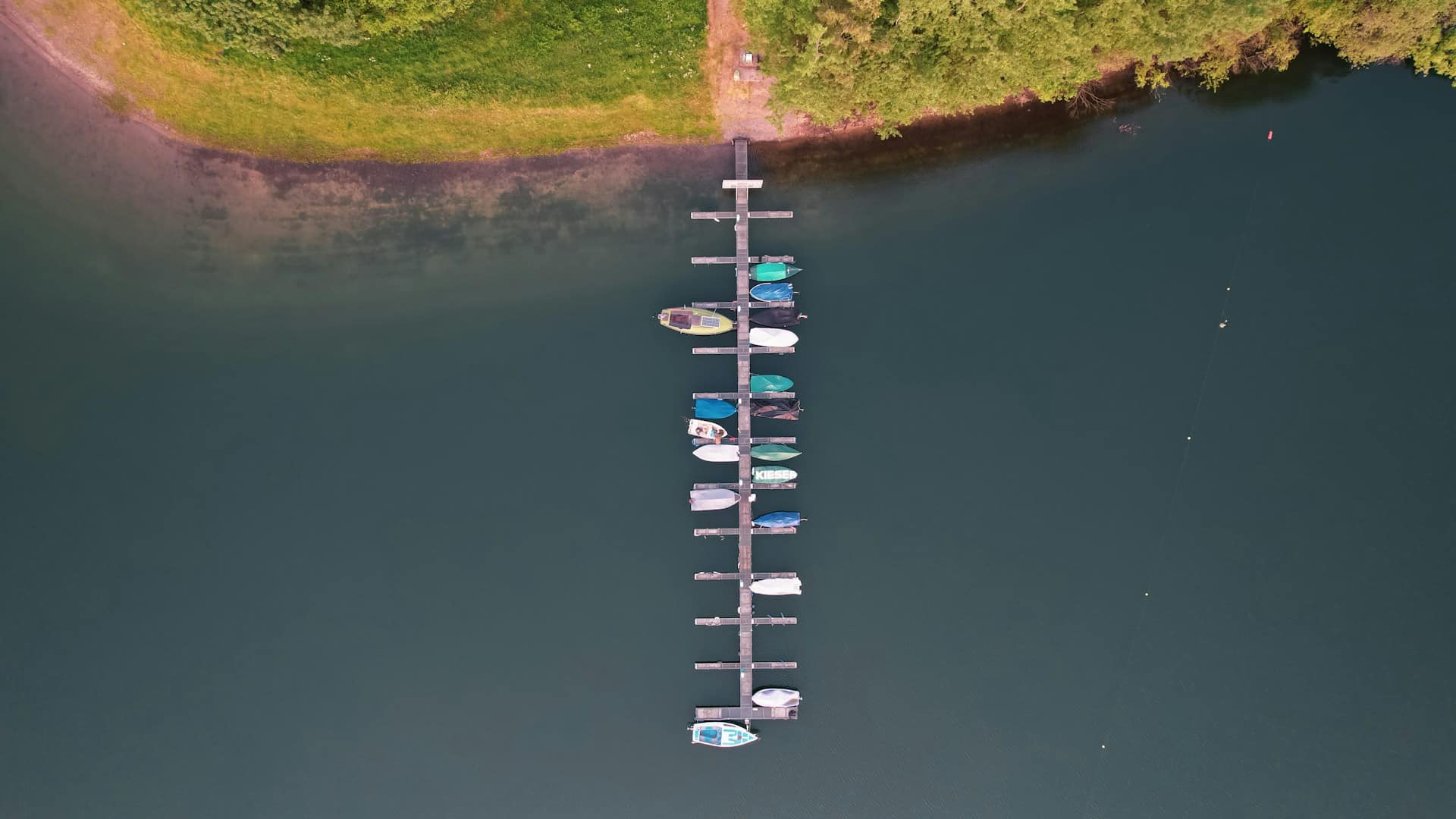Texas HOAs with lakes, ponds, or waterfront access carry a real responsibility. Residents expect a clean, safe place to relax, fish, launch kayaks, or enjoy time with family. But docks take the brunt of weather, water movement, and daily wear. Without a solid maintenance plan, small issues turn into costly repairs or safety hazards. The good news is that most problems are preventable with consistent care. A clear annual plan helps HOAs stay ahead of damage, protect residents, and extend the life of their waterfront assets.
Here’s a practical, easy-to-follow guide built for HOA boards, property managers, and maintenance crews who want their dock systems ready for year-round use.
Start With a Full Annual Dock Inspection
A detailed inspection early in the year gives your HOA a baseline. Crews should walk the entire dock and look for things like loose boards, unstable platforms, shifting floats, worn handrails, or corrosion around anchoring points. Any soft spots, unsteady areas, or obvious sagging should be flagged immediately.
Floating docks need special attention. Changes in water level can shift pressure points, which may cause attachments to loosen. Look over connection hardware, hinge points, and transitions from land to dock. If the dock sits unevenly, that’s a sign to act before it becomes a bigger issue.
Tighten and Replace Hardware Before Summer Traffic
Heat, humidity, and daily movement cause bolts, nuts, and connectors to loosen over time. A simple tightening session goes a long way. Check anchor lines, cleats, ladders, railings, bumpers, and all metal fasteners.
If hardware shows rust, replace it. Texas weather is hard on steel. Stainless or coated components perform better and reduce long-term repairs. Annual replacements keep your dock safer and preserve its overall lifespan.
Clean Surfaces to Prevent Slips and Damage
Algae, mildew, sand, and lake residue build up fast—especially during warmer months. Cleaning is more than cosmetic. A slippery dock becomes a liability.
Use a pressure washer with an appropriate setting to remove grime without damaging surfaces. If your HOA uses composite or PVC decking, follow the manufacturer’s cleaning guidelines. For floating docks, make sure washing does not loosen floats or disrupt anchoring.
By starting the year with a deep clean, monthly or quarterly touch-ups become much easier.
Inspect Floats and Buoyancy Structures
Floats carry all the weight. A damaged or waterlogged float weakens stability and can create a dangerous tilt. Make sure every float is sealed and performing as it should.
Signs a float needs replacement include:
- Visible cracks
- Bulging sides
- Water inside
- Dock sections sitting low on one end
Floats that fail should be replaced quickly to prevent uneven weight distribution across the dock.
Clear All Access Points and Walkways
HOAs deal with coolers, fishing gear, chairs, carts, and all sorts of clutter. That’s where accidents happen. Every annual plan should include clearing, leveling, and inspecting all walkways leading to docks.
Check for:
- Erosion
- Trip hazards
- Loose boards
- Soft soil or uneven ground
If the entrance feels shaky or uneven, fix it before residents start using the dock regularly.
Refresh Dock Signage for Safety and Clarity
Signs fade fast in Texas sun. Clear signage helps residents follow rules and reduces risk. Every HOA should review sign placement at least once a year.
Important signs include:
- “No Diving” warnings
- Weight or capacity limits
- Swim zone boundaries
- Hours of use
- Emergency procedures
- Life jacket reminders
Fresh, readable signs give residents confidence and help the board protect the community from avoidable incidents.
Check All Lighting and Electrical Components
Lighting makes docks safer during evenings and early mornings. Annual maintenance should include checking all lights along walkways, railings, and access paths. Replace dim or flickering bulbs and test electrical connections.
Solar dock lights are a simple, low-maintenance option for HOAs wanting better visibility without heavy wiring or ongoing electricity costs.
Evaluate Anchoring and Stability Systems
Strong anchoring protects the dock during storms, high winds, or seasonal water-level changes. Inspect cables, posts, chains, and anchors for wear or corrosion.
Anchors that shift or loosen put the entire dock at risk. Tighten or reset them as needed. A stable dock protects residents and saves the HOA from larger structural repairs.
Create a Seasonal Maintenance Calendar
Most HOAs find annual checks helpful, but docks need attention throughout the year. A clear, simple calendar helps keep things predictable.
A solid plan might include:
- Spring: Full inspection, repairs, hardware check
- Summer: Monthly safety walkthroughs
- Fall: Cleaning and storm prep
- Winter: Float checks and structural review
Having a predictable rotation keeps crews on top of issues long before they escalate.
Encourage Resident Awareness and Safe Use
Maintenance is only one part of the equation. HOAs that educate residents see fewer accidents and fewer wear-and-tear problems. Consider sending a seasonal email or posting a notice near waterfront access points.
A few reminders go a long way:
- Use caution around the edge
- Keep walkways clear
- Report loose boards or handrails
- Supervise children near the water
When residents understand their role, docks stay safer and cleaner year-round.
Final Thoughts
Docks are a major asset for Texas HOAs. A clean, stable, and well-maintained dock makes the entire community feel more welcoming. With a solid annual plan, HOAs can reduce repairs, improve safety, and create a better experience for every resident who visits the water. Regular inspections, clear signage, strong anchoring, and smart cleaning routines all help extend the life of your waterfront spaces.
For HOAs looking to improve or expand their dock systems, the team at EZ Dock Texas is always ready to help. You can reach out through the contact page at https://ezdocktexas.com/contact/ or follow updates and tips on Facebook at https://www.facebook.com/ezdocktexas.







